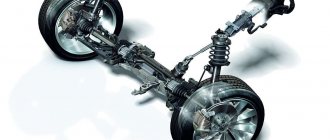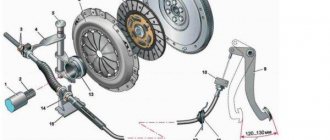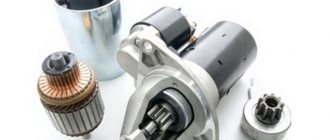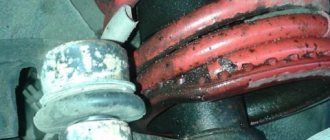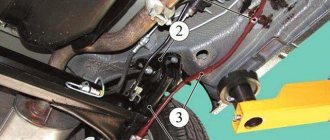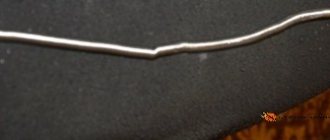When driving in cold weather, heated seats become especially important for the comfort and health of the driver and passengers.
However, such an option is often not available as standard, although experts believe that in Russia, due to climatic conditions, such an option should be present in all cars sold.
Installing heated seats yourself will help solve this issue.
Types of heated seats
External heating system
The most affordable and frequently encountered option. The following heating elements are built into capes and covers:
- Wire coated with Teflon;
- Nichrome coated with polyvinyl chloride;
- Synthetic insulating fiber Fiber Thermetics;
- Carbon fiber.
With a power of 40-100 W, the current consumption of the heating device will be from 4 to 8A, and is most often connected to the car cigarette lighter.
Some heating systems are equipped with mechanical or touch control panels. Heating devices are attached to the seat in accordance with its design.
The simplest type is “Cape”
Heating elements are built into the dense rubberized fabric. They are secured to the chair with Velcro or hooks on elastic bands and connected to the cigarette lighter.
Disadvantages of the "Cape":
- It is impossible to connect any other device to the cigarette lighter;
- The lack of temperature controls in many models leads to excessive heating;
- Heated rear seats are not available by design.
- Insufficient rigid fixation of the heater during its operation causes slipping, which interferes with driving;
- The appearance is not aesthetic enough.
Cases
Made from leather, fabric, leatherette or eco-leather. They can be used to cover all the seats in the cabin without exception, keeping the interior of the cabin at a high level.
Connect directly to the vehicle's electrical system, leaving the cigarette lighter socket unoccupied. The delivery set includes a control panel that allows you to control the heating temperature.
Installing a cover for heating the front seats yourself is much easier than installing covers, since to control them you need to embed the heating control panel into the interior trim.
This type of work requires professional qualifications. In addition, the financial and labor costs for installing heating covers are much higher than for capes.Pros and cons of heaters
There are several advantages of a built-in car seat warmer. This:
- From the outside it is not noticeable that there is a heater. If you use cap heating, the interior design may not be affected.
- The power source is a special unit. This has the advantage that the cigarette lighter socket remains free.
- The thermal relay controls the temperature, monitors the degree of heating of the coil so that it does not exceed the permissible heating temperature and does not ignite the seat.
- You can choose any location for the control unit.
- Can be installed on any seat in the cabin.
The disadvantage of built-in heating is the cost. The price of the built-in one is higher than the captive one. But, all the same, it is better to buy a built-in seat heater, it is more reliable.
Built-in heating systems
Such systems are mounted between the upholstery of car seats and the foam filling. Covers and covers used to heat seats are less durable and convenient to use than built-in heating systems.
Structurally, they consist of multilayer mats with built-in nichrome spirals, or heat and carbon fiber heating elements.
Features of built-in heating:
- Models with nichrome spirals are cheaper than others, but in some cases their installation is difficult;
- Systems with heat and carbon fiber heating elements can be easily mounted on any seat, are easy to cut and bend, but their prices are higher than for other systems.
Advantages of built-in heating::
- Such systems are connected not to the cigarette lighter, but to a special power source that can be installed anywhere;
- Hidden electrical wiring;
- The design provides for heating of all seats, both front and rear;
- Reliability;
- The presence of a thermal relay ensures safe operation.
How to make your own built-in heated rear seats in a car?
This option is quite rare on budget class cars. For some motorists it is not of interest, but for those who have a large family, a warm rear sofa will not be superfluous. The technology for installing and connecting equipment is identical to that described above.
To implement built-in heated rear seats, you will need two heating kits. Despite the fact that the installation process is carried out by analogy with the front seats, it is worth briefly considering the main transitions:
- choose a location for installing control buttons;
- remove the trim from the back, it is not necessary to do this completely - it is enough to release only the front and side parts;
- fix the heating mats and remove the wires;
- remove the upholstery from the sofa using the same principle;
- secure the sensors and heating fabric, remove the power wires;
- lay the wires in the tunnel between the chairs under the cover;
- install the buttons and connect according to the diagram.
Some car enthusiasts recommend using seat belts as a “ground”; the contact is quite reliable. Each person places the power buttons at their own discretion. For example, this could be the back of the front armrest or door. This option allows passengers to adjust the temperature at their discretion.
Independent production and installation of heating systems for car seats
The heating element can be a special cable or nichrome wire with a diameter of 500 microns. The wire is sewn into thick fabric and attached to places that require heating.
How to make heated seats yourself without involving specialists:- Prepare two pieces of nichrome wire 1.5 m each;
- Sew each of the pieces (on the seat and back) in a zigzag fashion to thick material, for example, old jeans;
- Connect the ends of the wire to the 12 V terminals of the power supply.
If the operating temperature of the heating element is exceeded and to avoid ignition, you should connect a thermostat or any other device that performs similar functions.
To eliminate the risk of fire in case of insufficient experience, the manufacture of heating elements should be entrusted to professionals.
In another option, a homemade spiral of nichrome wire 10 m long can be used. Such spirals are made by winding the wire around nails driven into a wooden beam.
4 manufactured spirals connected in parallel, at a distance of 4 cm, are fixed to the fabric and connected to the terminals of the power supply through a thermal relay.
If it is necessary to heat the rear seats in a car using a do-it-yourself system, any design is used with the exception of a cape.
Warm your neighbor in your car.
How many car models do you know, friends, that have one extremely rare but very interesting feature? Namely, we are talking about heating the rear seats in the car. Do you think that this additional option is a privilege only for expensive and luxury car brands?
For drivers and front passengers, more and more often, manufacturers are installing such a pleasant and important option in cars, especially in countries with cold and harsh climates, as heated seats. But, unfortunately, at the same time they completely forget about an equally large group of citizens, i.e. about the rear passengers, whom they literally leave without their attention, throwing them all into the cold and inhospitable back seats of cars. It seems that this trend is gradually becoming a thing of the past; today, in new and modern cars, at a much lower cost for ordinary people, manufacturers are finally starting to install heated rear seats.
Technical characteristics: - the most popular cars in 2015
There is still an opinion among many citizens that heated front seats are a very expensive additional option that the manufacturer installs only on the most privileged and expensive or premium models of cars in its line of cars. But in the current technological world, this phenomenon is gradually fading into the background and is no longer a concrete axiom. But with the second row of seats, things are not so rosy for the same manufacturers. Why were all the rear passengers left to the mercy of the cold fate, and is it true that they were abandoned?
Whether your friends believe it or not, you don’t have to earn like a king in order to benefit all your friends or family members with such a luxurious option as back heating.
Examination
Before installing any heating system, it should be connected to a power source and the heating intensity should be checked.
If there is no heating, it is possible to repair the seat heating device yourself.
How to choose a seat heating system?
There are many built-in heating systems on the market. They differ in quality and cost. The most expensive and high-quality electrical systems are made in Germany. These are universal products that can be used to warm the seats of almost any brand of car. The degree of protection of electrical wires here is very high. Failure within the specified service life is unlikely.
Domestic manufacturers present many varieties of such systems on the specialty products market. The greatest demand among buyers is for heated seats “Emelya”.
Experts say that Russian-made products are not inferior in quality to German products. But the cost of domestic systems will be an order of magnitude less.
Chinese seat heating products are the least expensive. They have a low protection class. Wires are easily damaged. They may fail in the first year of operation. This may result in overheating of the system and even a fire. It is not recommended to purchase such systems.
Sequence of work
- Remove and disassemble the chair;
- Using a multimeter, check the electrical circuits of the relays and heating elements for open circuits and short circuits;
- Find the faulty element;
- Eliminate the malfunction or replace it with a working part;
- Check operation by connecting to a power source;
- Assemble and install car seats in their original condition.
If you have knowledge of electrical engineering, electronics and relevant skills, you can find (for example on the Internet) an electrical circuit for the seat heating regulator and make it yourself.
Which seat heater for a car should I buy?
This device will help the car enthusiast feel comfortable during the winter season. When choosing heated seats for your car, you need to pay attention to the following factors.
Material
It should be pleasant to the touch, sewn neatly, and not cause discomfort.
Product safety
The device must have overheating protection and turn off when the set temperature is reached. The build quality must be of the highest quality to avoid short circuits, which could lead to a fire or damage to the vehicle's electrical wiring.
Reliability of fixation on the chair
The cape should not slide off at the slightest movement, nor should it fold into a pile. this will provide comfortable conditions for the driver or passenger in the cold season and will ensure uniform heating.
Specifications
This means the ability to adjust power, set several heating modes, and have a shutdown button. Such a device must fit harmoniously into the interior of the car. And evoke only positive emotions.
Photo of heated seats
BMW 320i with Cold Weather Package: $36,300 thousand US dollars
Our list starts with one of the most affordable cars on the market, the BMW 320i. The rear-wheel drive sports sedan, although it uses a relatively underpowered 180-hp 2.0-liter turbocharged four-cylinder engine, still offers many of the same features found in pricier, more powerful BMW models.
This means that you, gentlemen, can choose for an additional fee the so-called “Cold Weather Package” option, which will add heated seats not only in the front, but also in the rear, thereby helping to make this BMW car from the initial level more hospitable, that is, to make it a place to move around in the winter with comfort and warmth.
Kia Soul+ with Primo Package: $24,515 thousand US dollars
The Kia Soul isn't just a fun-looking compact car, it's also very roomy and, what's more, when equipped with the Soul+ Primo package, you'll find nice perks like: - heated seats all around in addition to ventilated front seats and with a large panoramic roof.
Under the hood is a 2.0-liter four-cylinder engine producing 164 hp. Further, among the technical characteristics of the car, it is worth noting the six-speed automatic transmission, which ultimately allows achieving fuel consumption in the combined cycle of 9.0 liters per 100 km.
Hyundai Santa Fe Sport with Tech Package: $33,995 thousand US dollars
The Koreans also went there. The Santa Fe is one of the few crossover models that sells for less than $34,000, which is why it makes it onto our list. For this money, you friends get this Santa Fe Sport with the Tech Package feature, which for an additional fee will make this car much more convenient for everyday use. And all due to the fact that this Tech Package function combines premium and popular equipment sets in one. All necessary functions will be available to the client for a reasonable fee. This means that this SUV has: -navigation, heated all leather seats, a panoramic roof, parking sensors, a visor over the rear window and much more. In general, we must admit that the Santa Fe Sport has become the most equipped model available in its segment.
See also: Hyundai and Kia will show 11 new models in 2015
Preparing for installation
If you set yourself the goal of installing heated seats on a VAZ-2107, then it is quite possible to implement this option, and for this you do not need to go to a car service, since everything can be done yourself. At the initial stage, you need to think through the scheme and procedure. You will also need to purchase all the essential equipment from which this option will be implemented. Looking ahead, it must be said that implementing the heated seat option is not such an expensive undertaking, so anyone can not only set such a goal, but also achieve it.
So, the sequence of actions for installing heated seats on the seven is as follows:
- We draw up a plan for the placement of buttons and wires. The power buttons can be located on the panel or on the plastic seat trim.
- The necessary equipment is purchased, which relates to it, is indicated below.
- We begin to implement the idea by placing buttons, installing heating, laying wires, and connecting the system.
- We check the proper operation of the device.
Everything is quite simple, but misunderstandings arise during the process, so we will consider the entire procedure for installing heated seats on the seven step by step. To begin, we purchase the necessary equipment, which will include:
- A switch that will enable or disable the implemented option.
- Relay and fuse.
- Wire and heating elements.
All these components can be bought as a set, which is called “car seat heating”, for example “Emelya UK-2” and others. Such kits consist of all the necessary equipment that will be needed to implement the idea. Once everything is ready, we move on to the next step - installing the heaters on the seats.
Installation of seat heating
Installation of heated seats begins with the installation of heating substrates. Any manufacturer comes with 4 such backings - two of them go on the chair, and two on the back. They can be placed both under the upholstery of the seat itself and under the covers. There is practically no difference, but as they say, if you do it, do it well.
To install the heating substrates, we remove the seats and begin disassembling the trim. Every driver knows how to remove seats, as there is nothing complicated about it. You need to unscrew 4 bolts around the perimeter of each chair, and then remove the seat out of the cabin.
Next, we do everything according to the instructions:
- First, remove the plastic seat upholstery at the bottom.
- After this, we dismantle the seat trim. This is not difficult to do, and even a beginner can cope with this task.
- The next step is to position the backing by making holes in the material that match those on the seat cushion.
- The cover is glued using adhesive tape. We pass the wire from the heating elements into the hole and secure it with ties.
- Ties are included with the kit. When tightening the wire, the option of maintaining the seat tension is simultaneously implemented. The wire with the connector is led out to the bottom of the seat, after which it will be connected according to the diagram.
- Now you can put the trim in place and move on to the back.
- The casing is removed in the same way, the backing is placed, and a wire is passed through the lower part of the foam back.
- To prevent the wire from being felt by the body, it is recommended to make a small depression along its location and glue it.
- We bring the connector to the bottom of the chair, and then return the trim to its place.
At this stage, the most difficult task is completed. After this, you can begin to install the chair in place. The installation of the backing for the second chair is carried out in a similar way.
Hyundai Elantra Sedan Limited: $22.525 thousand US dollars
Is it true, friends, that it seems incredible that the Elantra sedan model is in first place on our rating list, which even includes such a famous car model as the BMW 320i? Yes, this is somehow unusual for many, but what can you do, Hyundai itself adheres to this strategy when it comes to sales of its mainstream cars, and apparently, it is bearing fruit.
For a minimal amount of money, the Elantra Limited offers more features than the same heated rear seats. Naturally, the front seats of the car are also heated. It also has: -touchscreen audio system, automatic headlights with LEDs both front and rear. For $22.525 thousand US dollars, the Hyundai Elantra is among the most complete and voluminous car configurations among compact cars available on the global car market.
PS To our regret, it should be noted that the cars presented in this review are practically not represented on the Russian car market. Therefore, the prices indicated here (in the review) correspond to the realities of the US market, for which these top-end configurations are mainly created.
Subaru Legacy 2.5 Limited: $27,590 thousand US dollars
With standard all-wheel drive, Subaru has always offered something more in its vehicles than any of its competitors. Moreover, some of Subaru's rivals do not have such a function at all, especially if you look at the ratio of all-wheel drive to the cost of the car.
In the Limited trim level of the Subaru Legacy, things are even more interesting. This car is equipped with a 2.5-liter four-cylinder boxer engine, or a 3.6-liter boxer engine with six cylinders. Equipment created for the convenience of drivers and passengers includes: - dual-zone automatic climate control, Harmon/cardon audio system, heated second row of seats. For safety, the Subaru Legacy offers a number of new systems, including a blind spot monitoring system and a rearview camera.
See also: Comparison of the 2021 BMW 3 Series with the 2015 model
It is absolutely clear that the Legacy model, costing just over $27,000 thousand, is not just an all-wheel drive mid-size sedan, but it is also a very serious statement of how much a modern and technically outstanding car should cost today.


